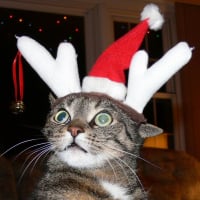SmartSDR v4.1.3 | SmartSDR v4.1.3 Release Notes
SmartSDR v3.10.15 | SmartSDR v3.10.15 Release Notes
The latest 4O3A Genius Product Software and Firmware
Need technical support from FlexRadio? It's as simple as Creating a HelpDesk ticket.
Odd behavior with 'rfpower' and 'tunepower' tags in TX subscription message
Answers
-
Len,
Yes, that's the one. I had hoped it made it into the latest release. I'll install it and give it a try.
Lynn
0 -
Just to follow up on my CTR2 project... ARRL published my article in the Sept/Oct 2021 issue of QEX. If you're an ARRL member you can read QEX online even if you don't subscribe to the paper edition. I have a blog up where I go into more detail than the magazine article could cover. If you're interested I have a link to it on my QRZ page.
Thanks to everyone for the help,
Lynn, KU7Q
1 -
Congratulations Lynn! I will try to read it tonight..
0 -
Hi Lynn,
I w I’ll check it out online. Mike Walker and I had an article on Node Red in this month”’s (September) QST.
73 and congrats!
Dave wo2x
0 -
Dave,
I read your article last night. Nice work and congratulations to you and Mike. The first thing that jumped out at me was the shameless plug for CTR2 and my blog for it at Lynovation in the first paragraph of your article. Thanks 😉
I suspect I confused Maty with the last pre-publication review revision to my article because I mentioned my new blog for CTR2. Both articles were on radio control so my last revision ended up in your article!
As I mentioned in the closing of my article, I get inspiration from the projects in QST and QEX and it happened again last night. Why not use Node-RED to create a user interface for CTR2? It could easily (a term I use loosely and perhaps naively) and cheaply replace the Nextion display. I already interface to the display with RS232 so a serial port off my station server or a Raspberry Pi 4 and I’m in business. Plus I wouldn’t need to code a web server to remote CTR2. As the old Ragu commercial used to say, “It’s in there”.
Who said being retired is boring?
Thanks for the inspiration!
73’s, Lynn, KU7Q
0 -
Lynn
I know, there are now a large number of "non-Flex" rig operators on the Node-Red Ham io group, that would welcome you providing a Node-Red Dashboard to interface with their rigs and antennas, via CTR2.
Suggest you join the group and open a discussion to gauge the interest level. Here is a link.
Alan. WA9WUD
0 -
Thanks Alan, I’ll take a look at it.
0 -
Welcome aboard Lynn! Working together to accomplish some cool things and continue to explore new uses for the technology never gets old.
My wife went to PA with my mother-in-law today so I have a day to sit here and brainstorm. I'm looking at a different approach to interfacing with the Flex via the API that will be cleaner and easier to maintain going forward. Stephen Houser on the Node Red group has some nifty JS code I am looking at.
BTW< Alan is the dashboard "Master".
73
Dave wo2x
1
Leave a Comment
Categories
- All Categories
- 378 Community Topics
- 2.1K New Ideas
- 630 The Flea Market
- 8.2K Software
- 116 SmartSDR+
- 6.4K SmartSDR for Windows
- 183 SmartSDR for Maestro and M models
- 428 SmartSDR for Mac
- 271 SmartSDR for iOS
- 258 SmartSDR CAT
- 191 DAX
- 382 SmartSDR API
- 9.3K Radios and Accessories
- 37 Aurora
- 254 FLEX-8000 Signature Series
- 7.2K FLEX-6000 Signature Series
- 945 Maestro
- 55 FlexControl
- 865 FLEX Series (Legacy) Radios
- 923 Genius Products
- 462 Power Genius XL Amplifier
- 336 Tuner Genius XL
- 125 Antenna Genius
- 296 Shack Infrastructure
- 208 Networking
- 458 Remote Operation (SmartLink)
- 144 Contesting
- 787 Peripherals & Station Integration
- 139 Amateur Radio Interests
- 1K Third-Party Software


